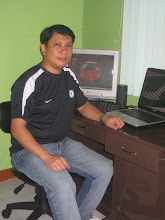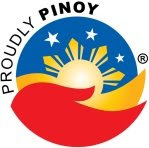Formerly, the small town of Rizal, Laguna was only a barrio of Nagcarlan, Province of Laguna. She was called as Barrio Pauli which came from the word “Pauli-uli” or moving back and forth after the meandering creek close by.
In 1912, after the liberation, Barrio Pauli obtained her municipal status with Pedro Urrea, Sr. as its Municipal President. She then became a municipality of Rizal, named after the country’s national hero, Dr. Jose P. Rizal. However, two years after independence the administration of Rizal was returned to Nagcarlan because of the inability of the municipal officials to uphold the basic needs of the government necessary to its operations. Consequently, the former municipality then became Barrio Rizal.
Because of the vehement desire of the people to maintain its municipal status, the residents led by Fortunato U. Arban and Agustin U. Vista then councilors of Nagcarlan, Laguna petitioned the Office of the Governor-General of the Philippine Islands praying that the former municipality of Rizal be separated from the municipality of Nagcarlan, Province of Laguna between 1912 and 1918.
On December 19, 1918, Acting Governor-General Charles E. Yeather issued an Executive Order No. 58 increasing the twenty seven municipalities of the Province of Laguna to twenty-eight by separating the former municipality of Rizal from the municipality of Nagcarlan and reorganizing the same into an independent municipality comprising eight barrios such as Antipolo, Entablado, Maiton, Laguan, Pauli, Talaga, Tuy and Pook that took effect in January 1, 1919.
After such creation, Fortunato U. Arban and Agustin Vista were appointed Municipal President and Municipal Vice President respectively, until they got elected in the same positions during the first local elections in 1919.
Historical Growth
At the heart of Laguna’s teeming coconut regions bordered by Mt. San Cristobal at the South, Mt. Banahaw at the east and Mt. Basilin at the northwest lies the municipality of Rizal, named after the greatest national hero fifty years ago. Approximately enough, a life-size statue of Dr. Jose P. Rizal stands at the center of the plaza.
Towards the end of the Spanish regime, Rizal was a barrio of Nagcarlan called “Pauli” from the Tagalog “pauli-uli”, or moving back and forth, after the meandering creek close by. During the American regime Pauli was given municipal status, with Pedro Urrea, Sr. as Municipal President. This lasted a brief two years, however, unable to maintain itself financially, the new town was returned to Nagcarlan as Barrio Rizal.
Between 1912 and 1918, the residents, led by Fortunato Arban, Agustin Vista and Felix Isleta then Municipal Councilors, led a renewed drive for municipal status of Rizal. They would have a town of Rizal that would take in the barrios of Antipolo, Entablado, Laguan, Maiton, Pauli, Pook, Talaga and Tuy. This was realized on December 18, 1918, when Governor-General Charles E. Yeater issued an Executive Order No. 58 creating the municipality of Rizal. Fortunato Arban was the first President.
When the World War II broke out in 1941, the sons of Rizal were at the forefront, and the blood of some of them were spilled in Bataan. Those who survived in the Death March returned to continue their struggle against the invaders in the wilds of Mt. Banahaw and Sierra Madre Mountain. Pablo Urrea, elected Mayor at the outbreak of war, secretly helped the guerillas during the occupation until the danger to his personal safety became too great, then relinguished his post to Vice Mayor Ismael Sombilla joined the partisans in the mountains. Sombilla soon found himself in the same situation. Being a guerilla himself, he stayed as long as he could at his post, then transferred his post to Councilor Dionisio Limcuando.
On January 23, 1945, the guerillas ambushed Japanese convey at Barrio Pook. For this the Japanese burned the heart of the town.
The men who distinguished themselves as partisan leaders included Cayo Verador, Aquilino Carpena, Eriberto Sombilla, Isidro Urriquia and Vicente (Ganggay) Isleta.
After the liberation, guerilla leaders persuaded Captain Isidro Urriquia to run for Mayor. He ran unopposed and occupied the post for three terms, during which period he constructed a new municipal building and cemetery chapel, improved streets, the waterworks system and Puericulture Center.
At the height of the Huk campaign, Mayor Urriquia organized his former guerilla comrades into the Rizal Fighting Unit, which with the battle cry “we have no rice, but we have bullets” drove the dissidents out of the territorial jurisdiction of the municipality and restored peace and order. For his courageous deeds, he was awarded commendations from Secretary Ramon Magsaysay of National Defense, Brigadier General Claro Lizardo, Colonel Eulogio Balao and other ranking army officers.
In 1950, Urriquia relinguished the mayoralty to Vice Mayor Ismael Sombilla and ran for provincial Board Member under the Liberal Party banner and topped the victorious group.
Mayor Sombilla, meanwhile served his community well for two successive terms. He was instrumental in the construction of additional school buildings, the new Community and Health Center building, the annex to the Municipal Building, cemented roads and feeder roads.
As if fate had decreed it, the name of Arban rose again in the firmament, when Melecio A. Arban, grandson of the revered and beloved Fortunato Arban, founder of Rizal won the Mayoralty in the municipal elections of 1967 as the poor man’s candidate. After barely a year in office Mayor Arban had caused the opening of the Community High School, a long felt need of the municipality, In taxation, his administration has succeeded in including the citizens to pay their real estate taxes to the point that Rizal stood second in the province in realty tax collection.











No comments:
Post a Comment